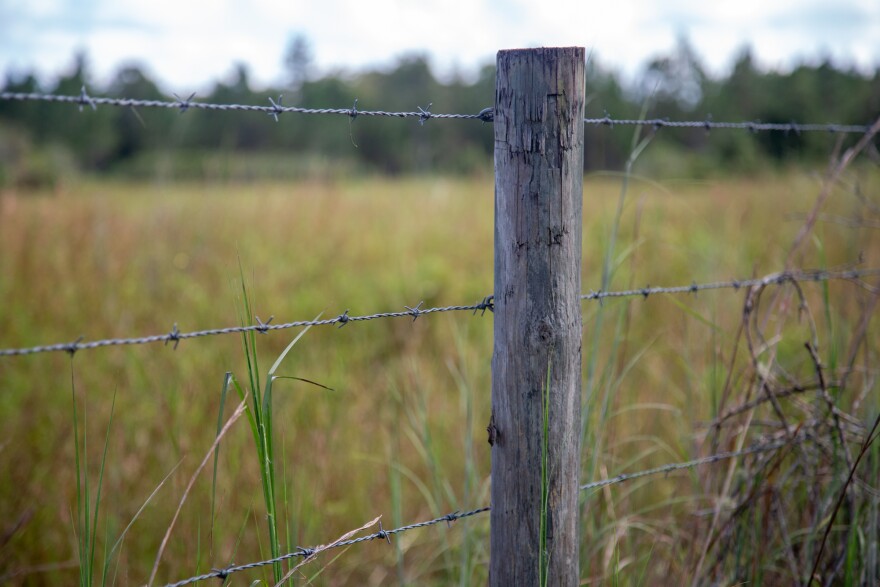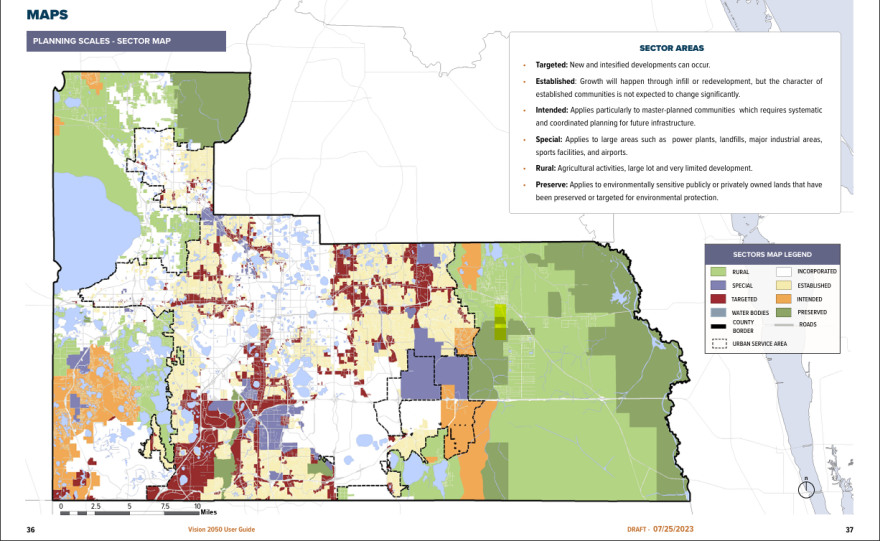The new land development rules in a pending Orange Code that Orange County plans to adopt soon don’t adequately address future impacts anticipated from climate change, like extreme heat and population growth expected from climate migration, according to some community stakeholders.
The county’s new comprehensive plan, Vision 2050, does include goals, objectives and policies aimed at mitigating various climate change impacts. But many of those elements lack corresponding regulations in the current Orange Code draft, leaving environmental stakeholders worried about the ability to hold the county accountable to meeting those targets laid out in the comprehensive plan.
The groundwork for both Vision 2050 and the Orange Code began in 2017, with a focus on facilitating more walkable communities and reducing car-dependent development patterns that lead to urban sprawl.
While Vision 2050 is a blueprint for the county’s future growth, the Orange Code will be the road map necessary for achieving that vision, according to Orange County.
RELATED: Orange County moves one step closer to growth planning overhaul
“Everything needs to be codified”
A land development code and comprehensive plan should be reflective of one another, said CLEO Institute Climate Resilience Manager Laura Betts, citing her former professional experience as a planner in Polk County and in her home state of Wisconsin.
“Vision 2050 is in pretty good shape,” Betts said. “But Orange Code, there’s a disconnect … If it doesn’t go into the code, there’s no pathway for it to be implemented.”

One policy in Vision 2050’s Housing and Community Services chapter calls for requiring new apartment complexes and planned communities to provide cooling spaces for residents to use during power outages, “to protect residents against heat hazards and uphold an overarching commitment to climate resilience and environmental justice.”
But the current Orange Code draft doesn’t include either term: “environmental justice” or “climate resilience.” It also makes no mention of “heat island,” a term included in seven policies and one objective in Vision 2050.
Heat islands, like pockets of heat, form in urban areas where buildings and roads absorb and reflect back sunlight, making temperatures rise higher than in the surrounding areas, according to the Environmental Protection Agency.
Extreme heat is the deadliest kind of extreme weather, according to the World Meteorological Organization. Vulnerable communities suffer disproportionately from extreme heat, including older adults, children, lower-income people and people who work outside, according to the EPA.
Betts said she applauds Orange County for emphasizing, in Vision 2050, the need to mitigate extreme heat. But without corresponding regulations in the Orange Code, there’s less pressure on the county to actually address that need, Betts said.
“Everything needs to be codified,” Betts said. “You could have a heat plan or a climate plan, but if it's not codified, it can go away with the next mayor.”
Betts worries without more clear, direct language requiring climate resilience efforts in the county’s land development code, those efforts could fall through the cracks. But she respects all the work by county staff, including environmental experts, Betts said, adding she’s still hopeful the Orange Code draft could change.
“I have trust in the commissioners and the mayor to do the right thing,” Betts said.

Planning for the future
Betts and other community stakeholders want to see Orange County produce social vulnerability maps, and integrate those maps into the Orange Code. Those vulnerability maps could help prioritize resources for neighborhoods facing disproportionate climate impacts, like heat islands, repeated weather disasters and food deserts, Betts said.
More specifics on how the county plans to handle expected future climate migration driven by sea-level rise should also be added to both the Orange Code and Vision 2050 drafts, according to Betts.
While the Orange Code never mentions “climate migration,” Vision 2050 brings it up once, saying the county will collaborate with partners “to learn and educate about the impacts of climate change as related to extreme weather and sea level rise and the resulting need for climate migration.”
More planning is needed to properly address both long- and short-term climate migration, like when Hurricane Maria drove an influx of Puerto Ricans to Central Florida, Betts said.
“We could plan for the future, and be one of the places that are so well-prepared; we're ready, and it's great economically,” Betts said. “Or, we could not prepare, and be the opposite.”
For Betts and other community stakeholders, while the Orange Code could use more work, adopting it in its current form would still be better than not passing it at all.

The next steps
Both the Orange Code and Vision 2050 are slated for a second, final adoption hearing on June 3. Before then, county commissioners will work to address any outstanding issues at a board work session Tuesday, Mayor Jerry Demings said at an initial hearing last week.
“We want to make certain that this works for everyone in our community, and that our process is well known, defensible; that the developers understand what the playing rules are, and staff and everyone is on the same sheet of music,” Demings said.

Meanwhile, several county commissioners weighed in on the concerns shared by Betts and other environmental stakeholders. Although District 3 Commissioner Mayra Uribe said she’s impressed with all the county’s work on its growth planning overhaul so far, she’s worried about the lack of a comprehensive transportation infrastructure plan in Vision 2050.
“I firmly believe infrastructure is where you start, and growth happens after,” Uribe said.
In a written statement, District 4 Commissioner Maribel Gomez Cordero described Vision 2050’s environmental proposals as “a step in the right direction,” a sentiment echoed by several of her colleagues. Vision 2050 illustrates the county’s “commitment to sustainable growth and environmentally-friendly development,” Gomez Cordero wrote.
Both District 5 Commissioner Kelly Martinez Semrad and District 1 Commissioner Nicole Wilson recognize the county’s current plans would benefit from more sustainability-focused initiatives, but say ultimately, it’s better to implement the plans as-is than not at all, according to written statements shared on behalf of each commissioner.
“We realize that the plan lacks the inclusion of critical issues such as urban heat islands, economically challenged communities, and climate migration. Long-term vision is essential to get to a point where we can successfully address these issues,” Martinez Semrad wrote.
Meanwhile, Wilson wrote while she’d love to see the county’s pending plans include more sustainability initiatives, delays in enacting Vision 2050 have already “left the door open for unsustainable development practices to continue.”
“Our current code is archaic in virtually every way, but especially when it comes to environmental initiatives and sustainable growth,” Wilson wrote. “It will never be a perfect document, but it will immediately provide us with more tools to protect our people and our environment."





